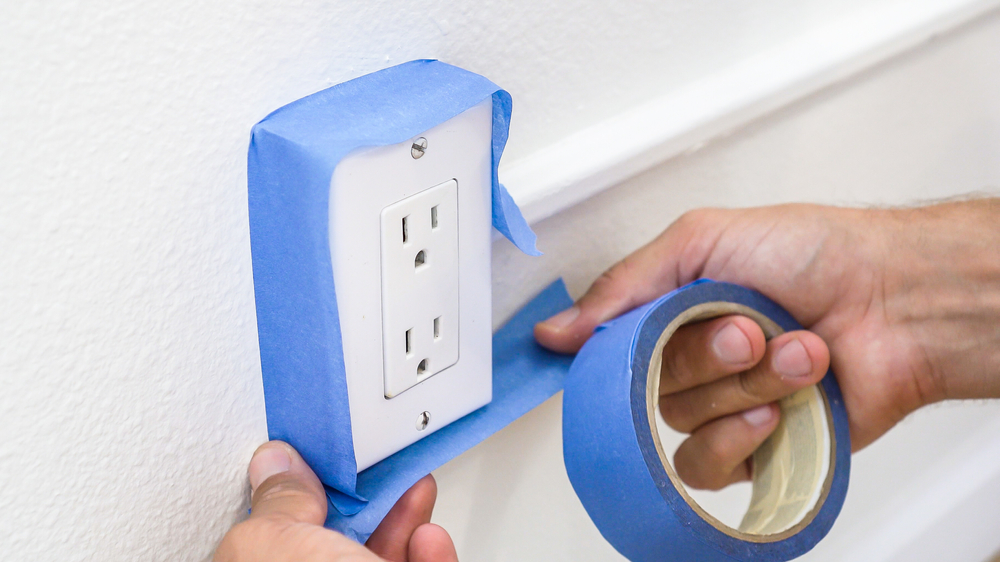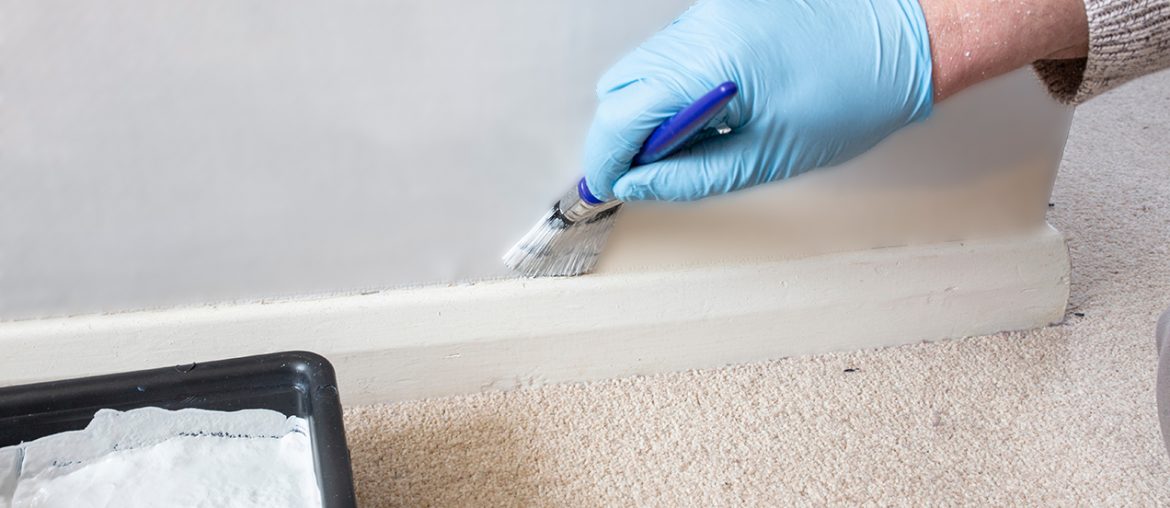In painting, cutting in means drawing a straight line using a brush to paint areas that are too tight for paint rollers, like cornices, jambs, trims, baseboards, corners or ceiling lines. If you want an even and smooth paint job, then you must learn how to paint these areas and avoid creating a frame.
There is also no going around it. If you are a novice, you might hold the brush awkwardly at the start and not be able to paint straight lines. But it’s good to know that the best thing about painting your walls is that practice makes perfect. So keep calm and carry on.
Click this link to read more about cutting in.
Use a 1-1/2 to 2 inch paint brush for this task, a natural one if you are going to use an oil-based paint and a synthetic one for a water-based paint.
Use Tape to Cover Areas You Don’t Want Painted
If you are not confident enough and would like to avoid that paint bleeds on the surface that should not be painted and would like to aim for crisp lines, you can always choose to use painter’s tape. Masking tape can also work in a pinch.
There are differences though to the two tapes:
- painter’s tape is colored (usually blue), masking tape is white
- painter’s tape is more expensive than masking tape
- masking tape is stickier than painter’s tape and may be more difficult to remove
- masking tape may leave a residue when removed so you have to do some cleanup work
Use the tape for the edges of the wall as well as for electrical outlets, light switches, and anything else that should not be painted.
Remove the tape when the paint is dry-to-touch. Check the back of your paint can to see how many hours it will take when the paint is dry enough. This usually means that no paint adheres to your finger when you lightly touch the coated wall.
Tip: If you want a professional finish and want to avoid cleanup work, then do invest in painter’s tape. For me, this is a must if you are cutting in above the baseboard. Covering it with tape serves to protect that area, more so when you switch to a paint roller and start painting the wall. Sometimes drips cannot be avoided.
How to Ensure a Smooth Finish While Cutting-In
Professional painters usually don’t use painter’s tape. That’s because they know what they are doing, know how to keep their hand steady, and know how to angle the brush to make for crisp lines.
But if you are a DIY paint newbie, then spend for tape and make the additional step of taping the edges of your surface to cover that part that you definitely don’t want paint on. This is especially useful if the paint you are using is a bright or intense color compared to the surface you don’t want painted.
Think of accent walls.
View this post on Instagram
Below are my tips as a DIYer who has painted the walls of a 100 sqm condo.
1. Load enough paint on your brush
Don’t overload your brush with paint to prevent spills or drips. Tap your brush on the paint tray to make sure that the bristles have paint on them. Paint an inch away from the line you want to cut in (like the ceiling or baseboard), which you have or have not covered with painter’s tape.
Angle the wide part of the brush parallel to the surface you are avoiding, and paint the wall with a steady hand in one stroke if you can. Gradually move the brush closer to the line. Make sure that you move the brush towards you and not away from you so you can always see what you are doing.
For cutting in, you just need about 4 inches of the surface painted from the line or the edge. You don’t need to brush more than that because once you paint the wall, you switch to a paint roller to do the job faster. However, don’t keep it also too narrow to avoid hitting the adjacent surface with the roller.
2. Angle Your Brush
Personally, I like angling my brush with the wider part parallel to the adjacent surface. For example, if I want to avoid painting the ceiling, my brush is in a horizontal position. If I want to paint near the adjacent wall, my brush is in a vertical position.
If you are painting the upper corner of an adjacent wall, then it gets a bit tricky. What you do is angle your brush slightly that the tip of one side of the brush can reach that corner. Once you’ve painted that corner, you can then angle your brush vertically and paint down the wall.
Stand near the corner so you see that when you bring your brush down, you would be painting a straight line down. Again for emphasis, paint with the wider part of the brush facing the adjacent wall.
The more you practice the different movements of angling your brush, the better you become. Promise.
You may even discover your very own way of handling the brush to achieve better results!
3. Painting Around Electrical Outlets and Light Switches

Before painting a wall, you can either remove the (rectangular) cover plates or tape over or around them.
Load your brush, tap it against the paint tray, then paint around the cover plate. Start painting about an inch away from the line then move closer.
You can change the angle of the brush as you go around it with the wider part facing the plate.
Sometimes you will see the brush marks in the corners. To make these disappear, run your brush lightly around the plate. Lightly making diagonal strokes on the four corners.
4. Work in Teams of Two
Again, paint a narrow line of about 4 inches when cutting in. Second, do not allow the paint to dry. This means that you have to work in teams of two—the person doing the cutting in, and the person who will paint the bigger surface area with a roller.
How do you maintain a wet edge when rolling over the brushed areas? The answer is to work in smaller sections on the surface.
As they say, “Teamwork makes the dream work!” Follow these steps to ensure that you avoid having a frame when cutting in, and making sure that your finish is superb!
For more Boysen paint tutorials, subscribe to this blog.




